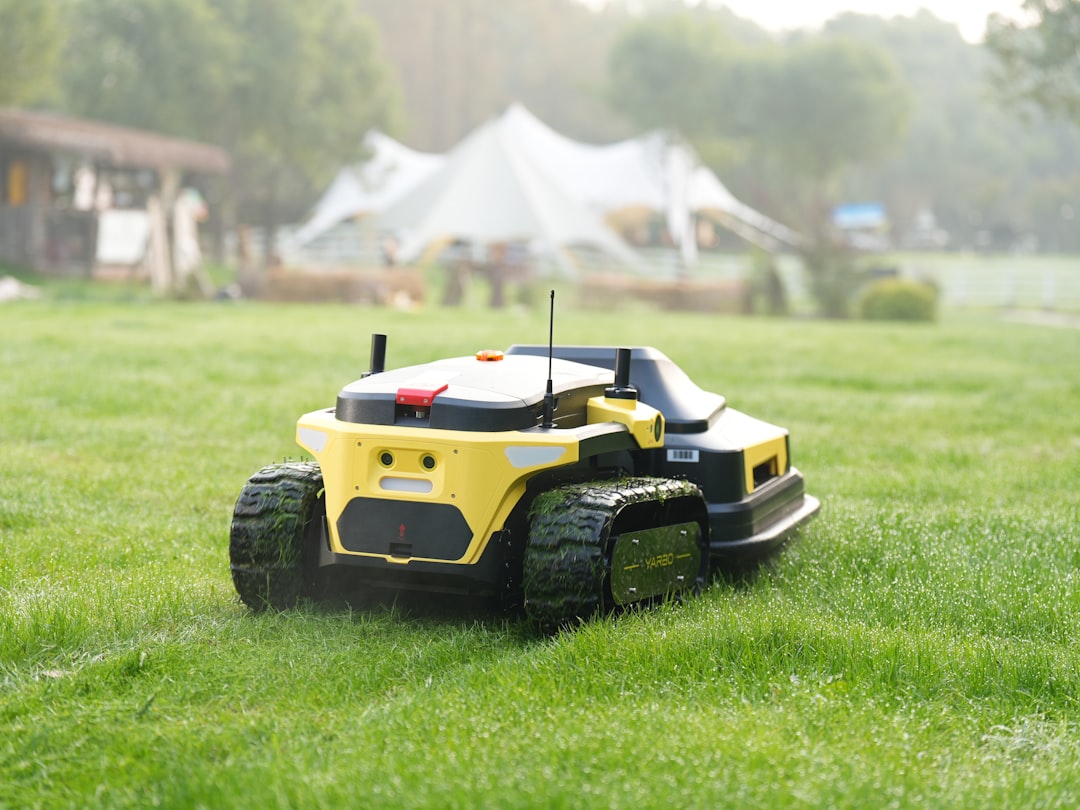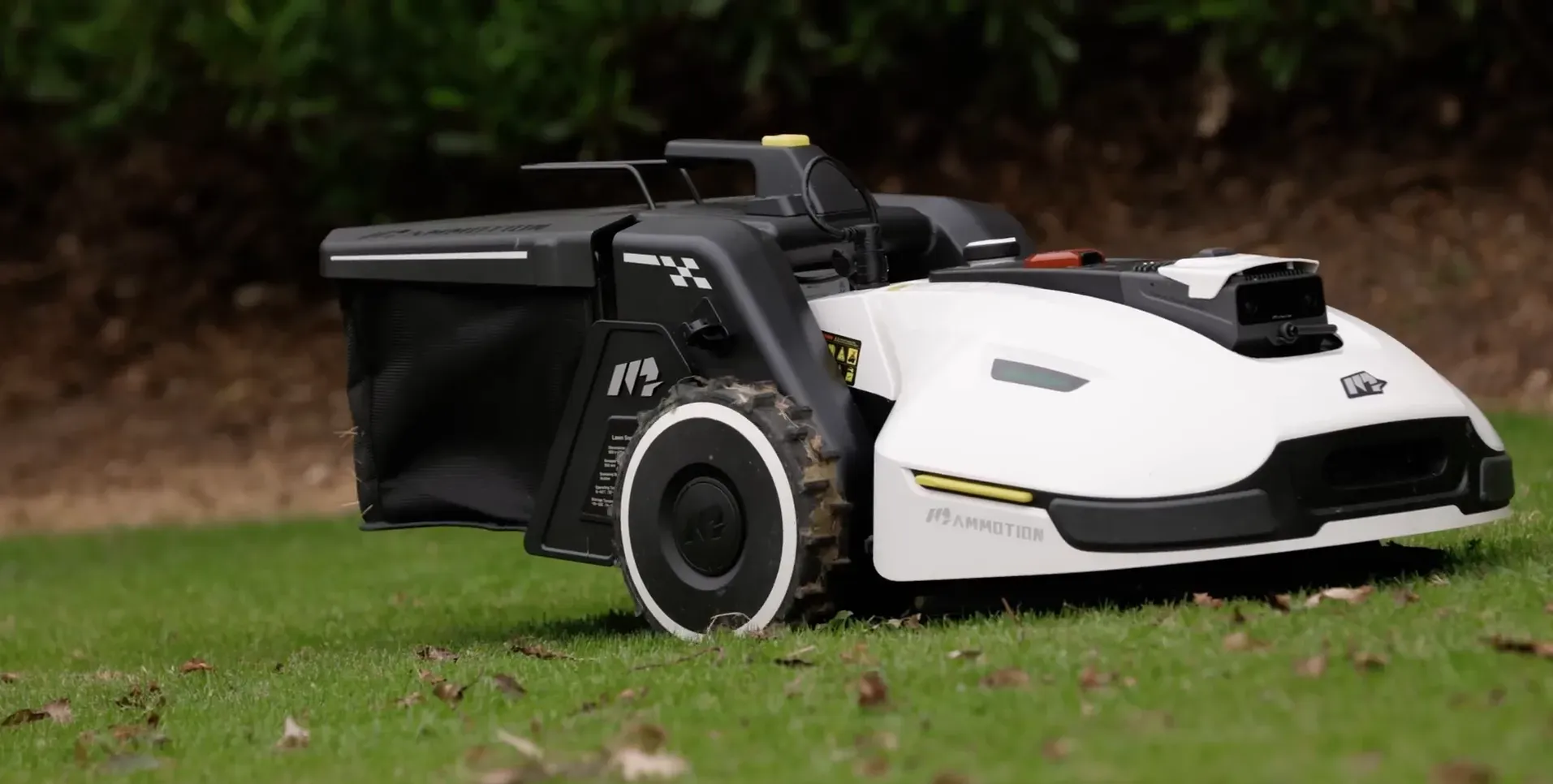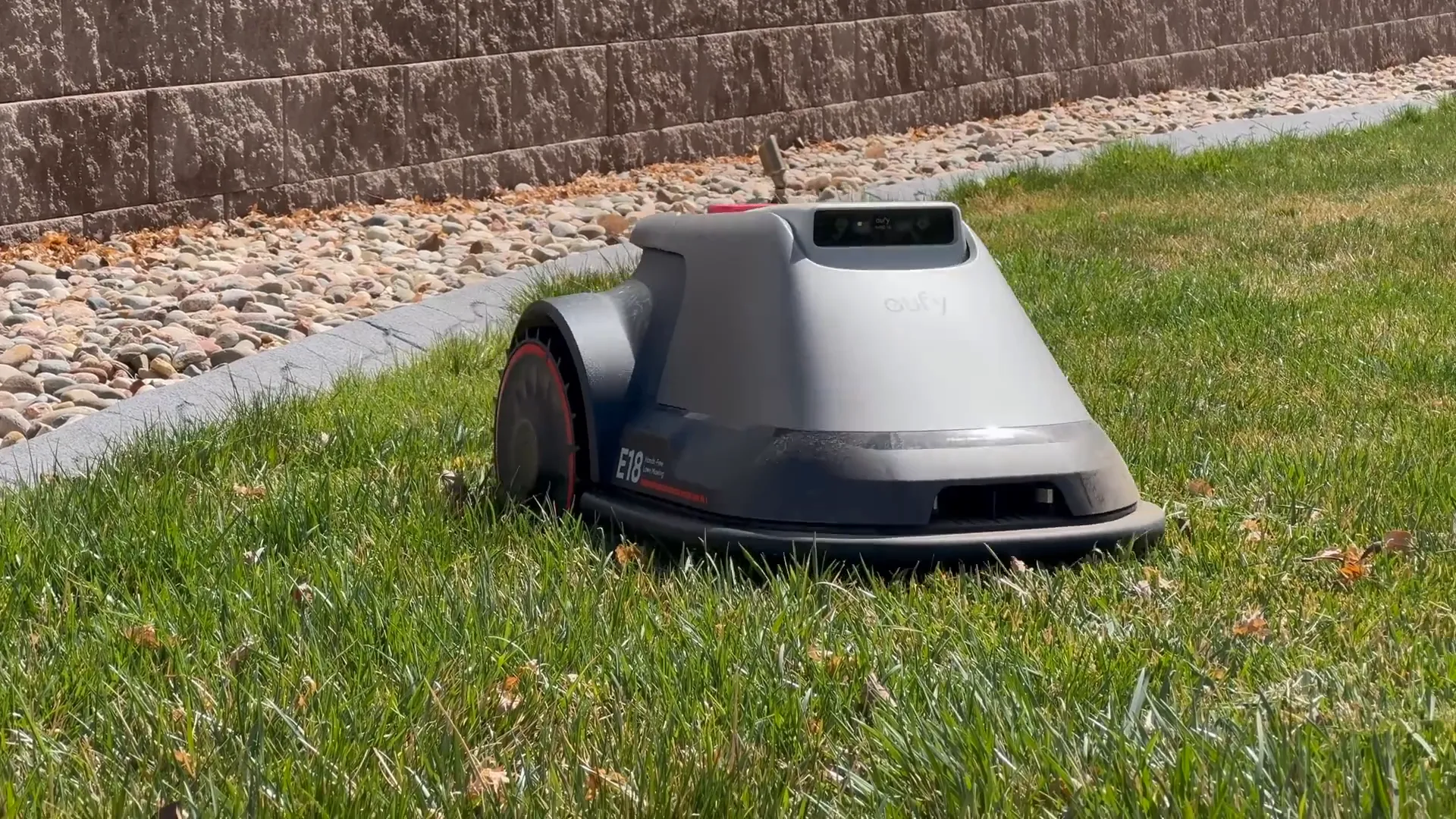This in-depth review examines the YARBO robotic lawn mower after several months of real-world testing across different turf types. The evaluation focuses on setup, reliability after long idle periods, cut quality, and how the system handles tight areas and obstacles.
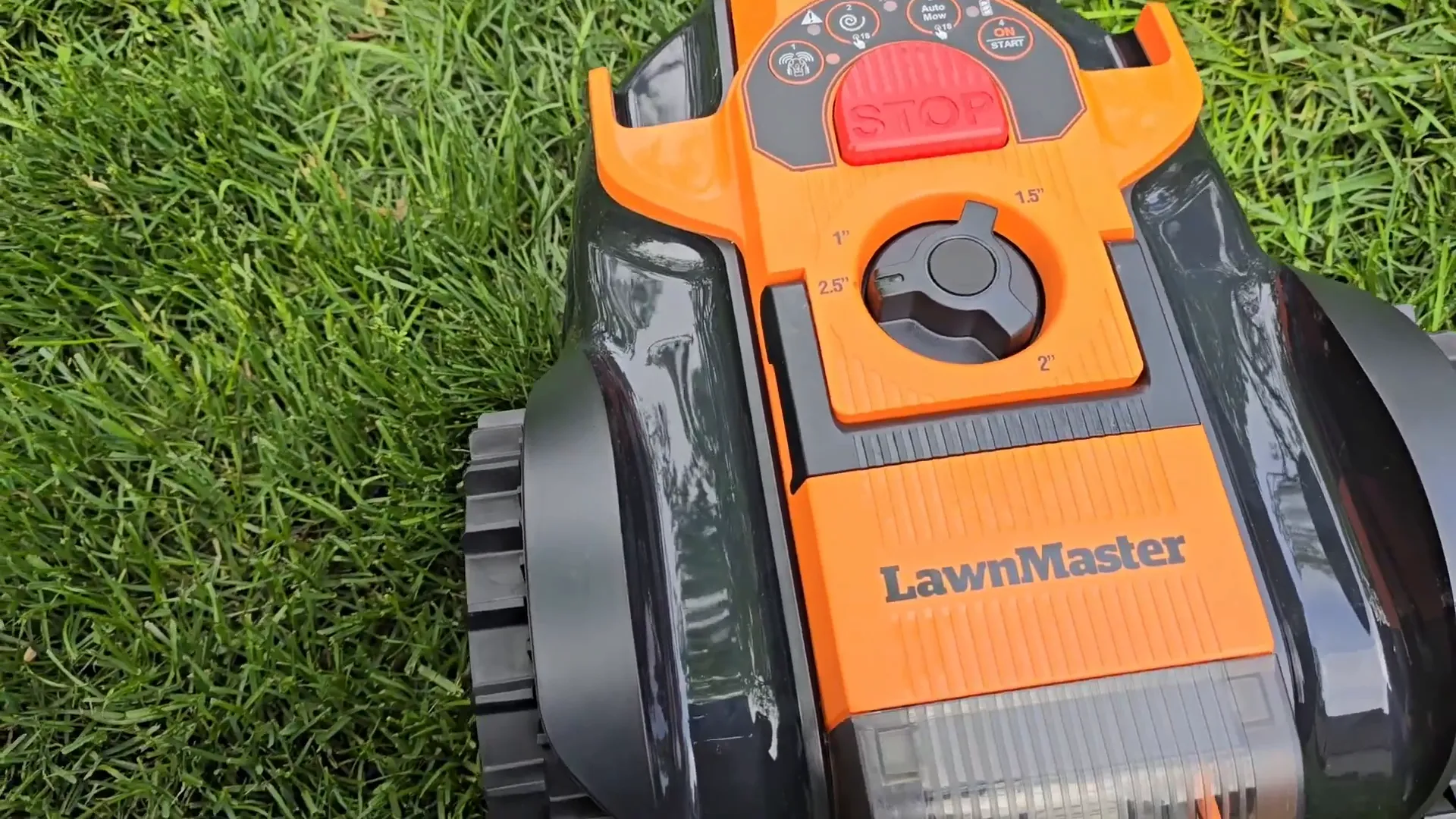
The LawnMaster OcuMow robot lawn mower offers an entry-level, cordless approach to routine lawn maintenance for small yards. It emphasizes simplicity: no buried boundary wire, a removable battery that charges in an external charger, and a compact cutting head designed for frequent trims rather than one-pass overhauls. This review summarizes how the unit performs on thick spring grass, how its sensors and boundary options behave in real-world conditions, and which kinds of properties will get the most value from this model. The following sections cover setup, cutting performance, sensor behavior, maintenance, pros and cons, and a short FAQ for common buyer questions.
Overview: What the LawnMaster OcuMow Is Designed For
The LawnMaster OcuMow is a compact robot mower intended for small lawns and routine maintenance, not heavy-duty mowing or large properties. It uses a six-inch cutting pattern and works in either a random "auto" mode or a concentric "circle" mode, meaning it won’t produce striping or traditional mower lines. Boundary control is accomplished with a magnetic strip and small stakes that keep the unit away from designated areas; the mower can also detect sudden changes in surface texture. Electronics are minimal: no Wi‑Fi, no app, and firmware updates require a USB flash drive and manual installation under the unit.
First Impressions and Setup
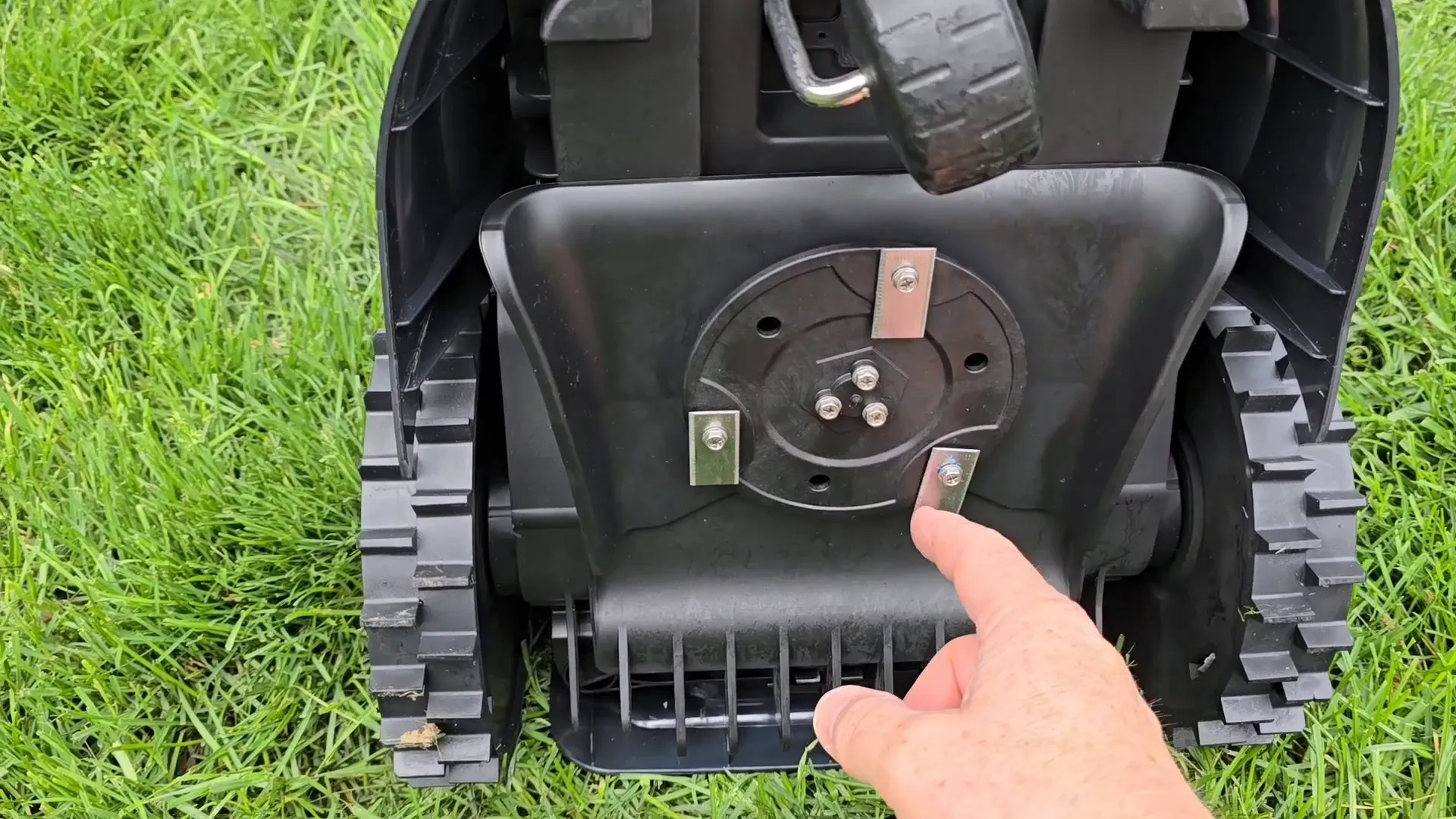
Out of the box, the mower feels lightweight and easy to handle thanks to a molded carrying handle and a simple top control panel. The battery is removable and charges in a separate charger included with the unit, which adds a manual step compared with dock-station models but simplifies the hardware. A safety key must be inserted for operation, and the power button initiates a short diagnostic sequence indicated by flashing lights and beeps. Basic height adjustments are mechanical, allowing a range from roughly one inch to two-plus inches depending on the setting chosen.
Design and Cutting Mechanism
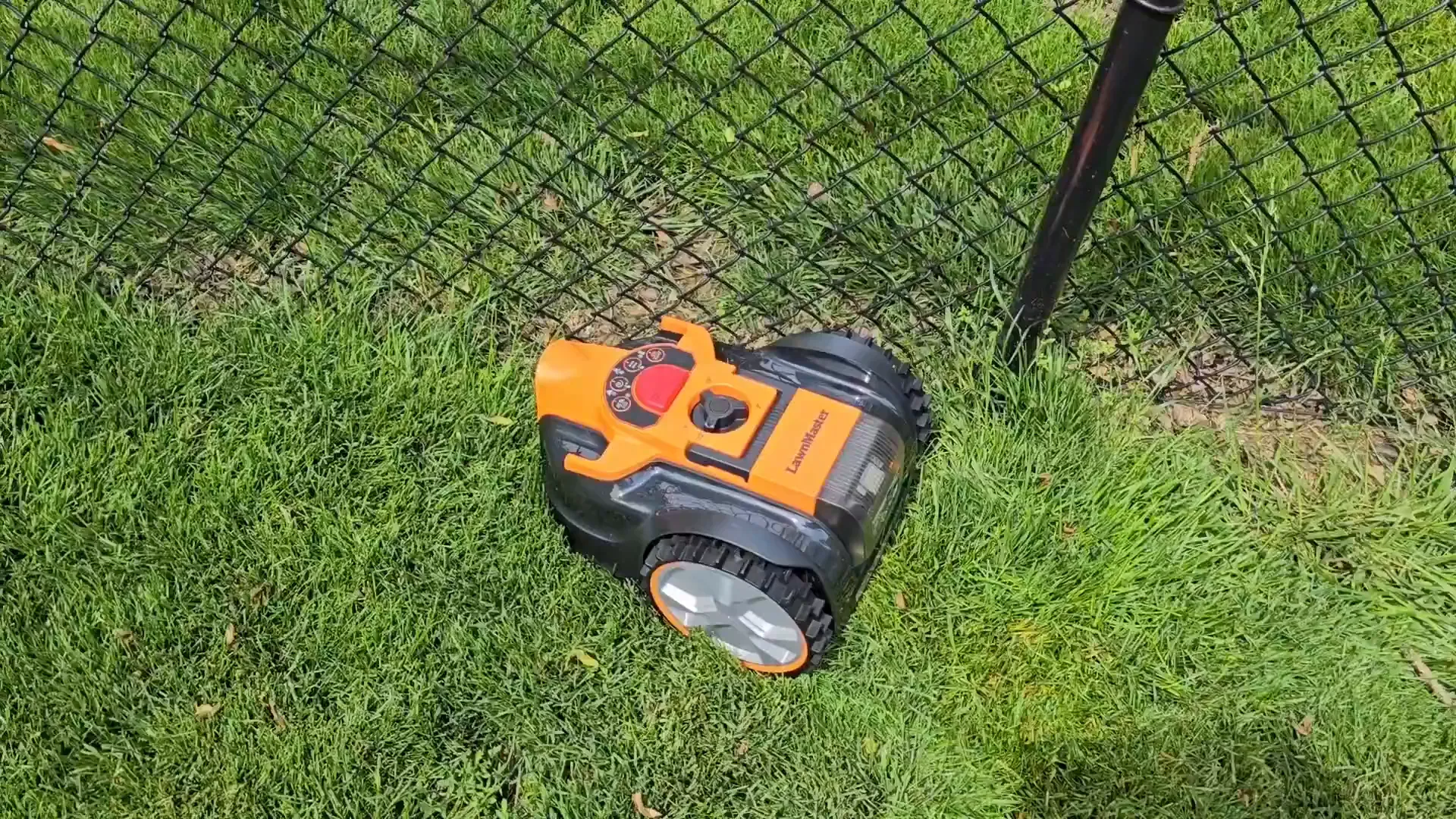
The mower’s cutting system is compact: a six-inch swath formed by a small spinning blade assembly on the underside of the unit. Those blades are loose-mounted and replaceable, and the cutting head raises and lowers via a simple mechanical adjustment. Because the effective cut is concentrated in the middle of the chassis, visual expectations should be adjusted—grass outside the six-inch band will remain until the unit revisits the area. The small blade size is suited to frequent trims rather than tackling overgrown lawns in a single pass.
Mowing Modes: Auto (Random) vs Circle
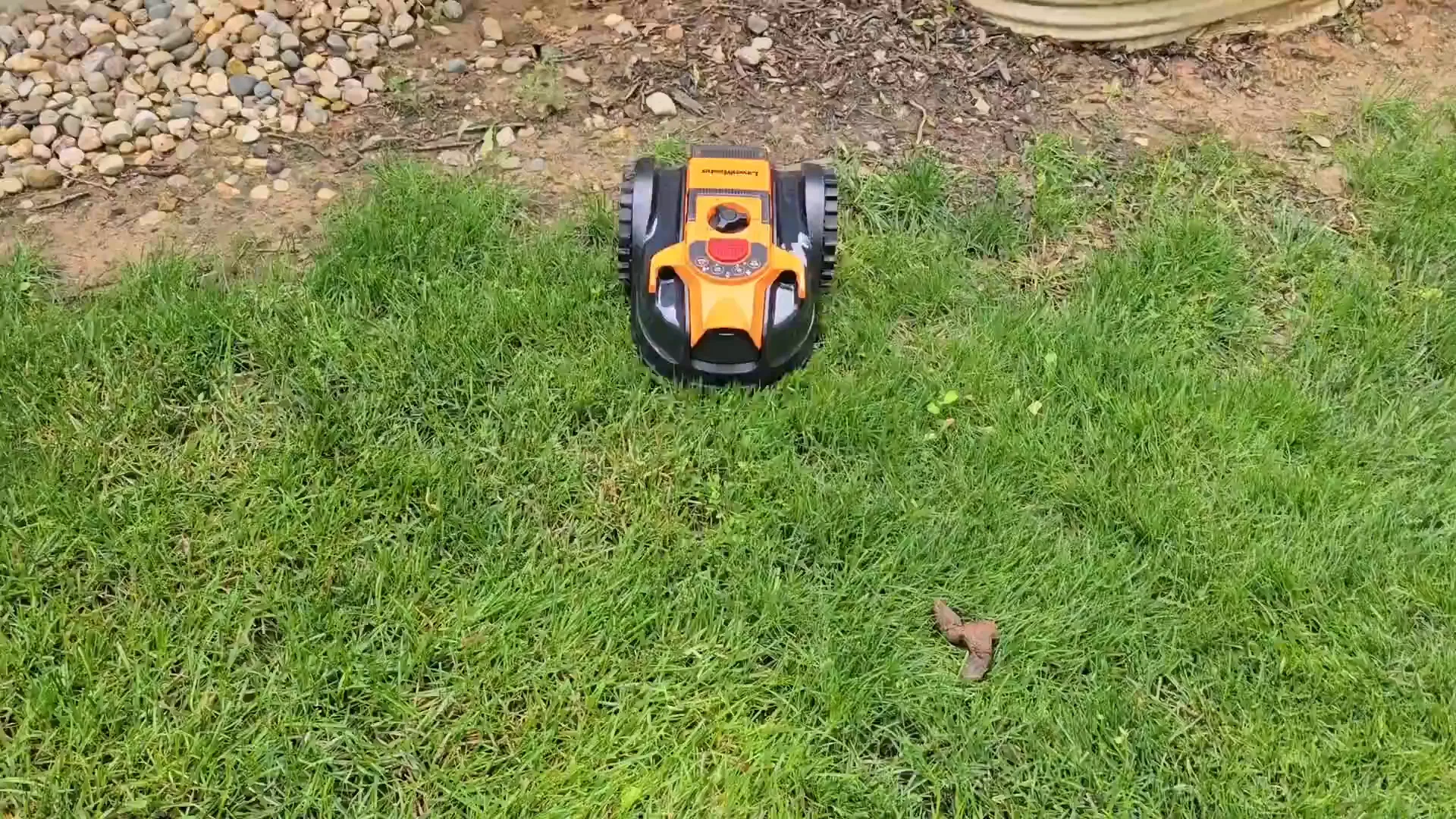
The OcuMow offers two mowing strategies: a random auto mode that wanders the yard and a circle mode that starts small and expands outward in concentric loops. Auto mode emulates early robot vacuums by changing direction on contact or when sensors detect a transition in surface texture. Circle mode is useful for focused coverage from a central starting point, although wheel paths can cause small uncut bands near the tire tracks. Both modes take a few seconds to spin up the blades after movement begins, and a large top stop button or lifting the mower disables the blades instantly for safety.
Sensors, Magnetic Boundary Strip, and Obstacle Behavior
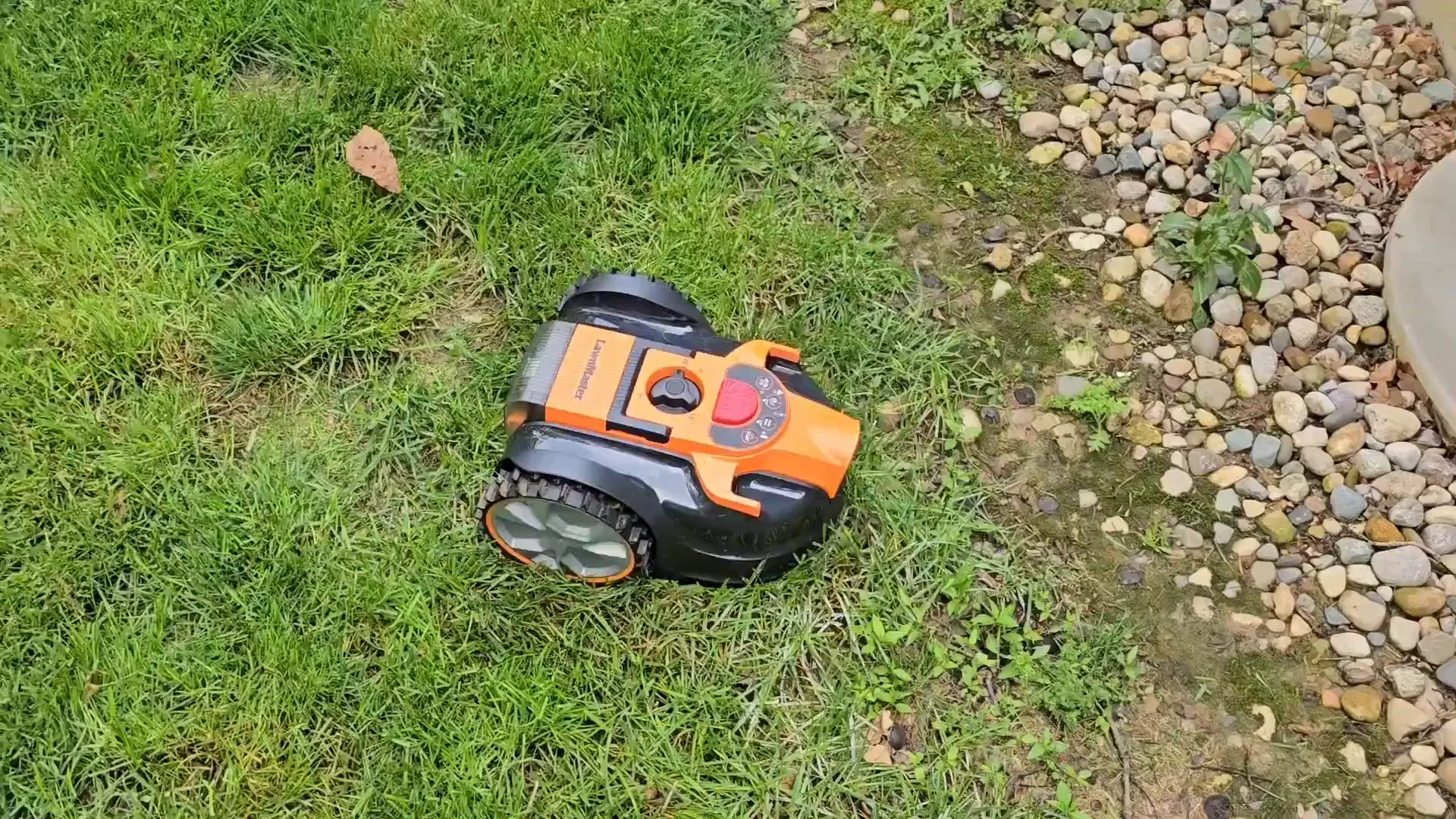
Boundary control is dual-mode: a physical magnetic strip defines no-go edges and an ultrasonic-style sensor detects changes in surface texture or large obstacles. The ultrasonic sensor can be toggled off if the user wants the mower to only respect physical barriers, but leaving it on improves obstacle avoidance around shrubs or abrupt surface transitions. The sensors do a reasonable job of detecting sidewalks, rock lines, and bare patches and will turn the unit away; however, small items and soft hazards such as pet waste can still be run over. For theft deterrence and unauthorized use prevention, the unit supports a PIN lock feature entered via the manual.
Performance on Thick Grass, Slopes, and Uneven Terrain
Performance depends heavily on lawn conditions. The mower handled thick, freshly grown spring grass on a test area, but its small cutting width and blade size mean multiple passes are required to reach a consistently short finish. It can climb mild slopes and negotiate gentle changes in elevation, but it is not designed to escape deep holes or highly uneven terrain. For lawns maintained at higher mowing heights (around 2–2.5 inches), the unit can act as a maintenance trimmer; for heavily overgrown yards it will struggle and may bog down if set to the lowest cutting heights.
Battery, Charging, and Maintenance
The battery is removable and charges externally in the provided charger, which requires users to swap the battery for each charging cycle rather than letting the mower return to a dock. This approach simplifies hardware but introduces an extra handling step. The mower reports charging status on the battery and seemed to use power slowly during short tests, but full-cycle runtimes will vary by grass density and slope. Firmware updates are possible via a USB-A port under a small cover on the underside of the mower, meaning internet-free update capability but a bit of manual effort for owners who want the latest software.
Advantages and Limitations
The LawnMaster OcuMow brings a low-complexity robotic mowing option to small-yard owners who prefer an inexpensive, no-app solution. Its compact size and simple boundary options make it easy to set up in fenced or defined yards, and features such as the safety key, lift-to-stop, and a PIN lock enhance safety and security. Its limitations include the narrow six-inch cutting width, lack of an automatic charging dock, no Wi‑Fi connectivity, and modest obstacle-handling in very rough or deeply uneven areas. Realistic buyers should consider acceptance of a randomized cut pattern rather than manicured striping.
- Pros: Lightweight and affordable-looking, easy battery swap, magnetic boundary strip included, simple controls and safety features.
- Cons: Six-inch cutting width requires multiple passes, no auto-dock or Wi‑Fi, may struggle on very thick or tall grass and in deep holes, and it can run over small hazards.
Who Should Consider the LawnMaster OcuMow
This model is best-suited for homeowners or renters with small lawns—typically under 1,000 square feet—who want automated, low-maintenance trimming rather than professional-looking striping. It is useful for yards with clear physical boundaries such as fences or garden edging and for users who are comfortable removing and charging a battery between runs. Investors, Airbnb hosts, or property managers with compact green spaces may find the simplicity and low up-front cost attractive, provided daily supervision or occasional retrieval is acceptable.
Conclusion
The LawnMaster OcuMow robot lawn mower is a practical, budget-minded choice for small yards that need regular maintenance rather than a one-pass professional finish. It offers straightforward setup with a magnetic boundary strip, simple controls, and safety features such as a removable safety key and PIN lock. The small six-inch cutting width and lack of an auto-dock mean it is most appropriate for compact lawns and owners willing to trade convenience for simplicity. For those seeking autonomous, connected, or large-lawn solutions, a higher-end model with extended cutting widths and docking capability would be a better match.
Frequently Asked Questions
How wide a swath does the OcuMow cut and what does that mean for yard coverage?
The mower cuts a roughly six-inch swath centered beneath the chassis, which means it works by covering small areas repeatedly. For full coverage, the unit must wander the lawn over many passes; predicable stripes will not be produced. This design favors regular maintenance cycles rather than a single deep cut, so frequent operation yields better-looking results over time. Buyers should expect a long run time to fully cover larger patches of turf compared with standard-push mowers.
Does the mower return to a charging dock automatically?
No. The OcuMow requires manual battery removal and charging in the supplied external charger. This avoids the complexity of a dedicated dock but does mean the owner must swap batteries or bring the unit in for charging. For properties where unattended, automatic docking is a requirement, this model will not meet that need. Manual charging can be acceptable for small yards or owners who prefer occasional hands-on maintenance.
Are the sensors reliable at preventing damage to landscaping and obstacles?
The magnetic boundary and ultrasonic/texture sensors provide two layers of protection and generally avoid obvious obstacles like fences, sidewalks, and large shrubs. The ultrasonic sensor is designed to detect changes in surface and large obstacles and can be turned off if it interferes with intended paths. However, small objects, pet waste, and very shallow holes can still present problems; the mower may pass over soft hazards or become stuck in deeper trenches. Regular yard checks and clearing of small items remain recommended for safe operation.
Can software updates be installed and is there an app for remote control?
The mower does not support Wi‑Fi or a mobile app. Firmware updates, if available, must be downloaded from the manufacturer’s website onto a USB stick and installed via a USB-A port located under a small cover on the underside of the unit. This manual update method prevents remote configuration but allows improvements without internet connectivity to the mower. Owners who expect app-based scheduling or cloud features should look at higher-end models with integrated network support.








